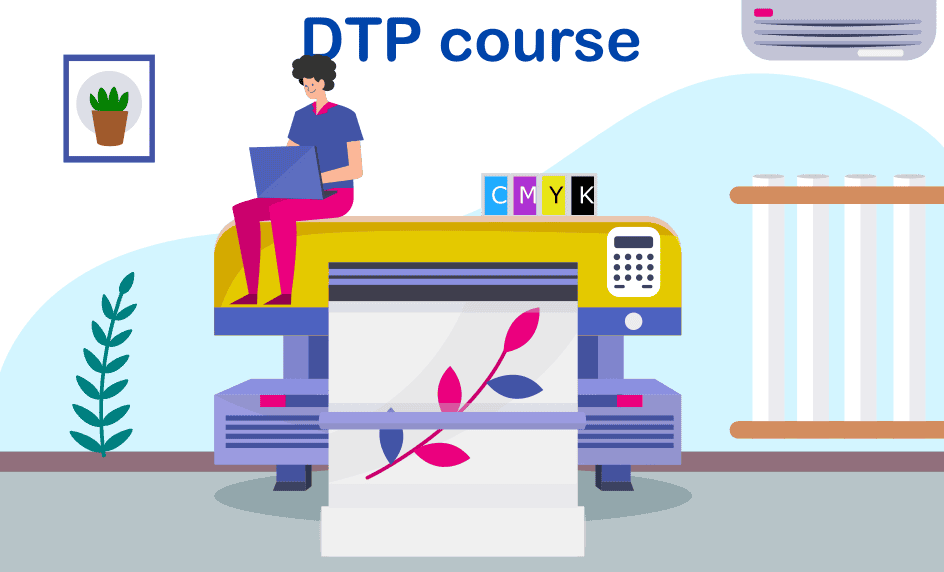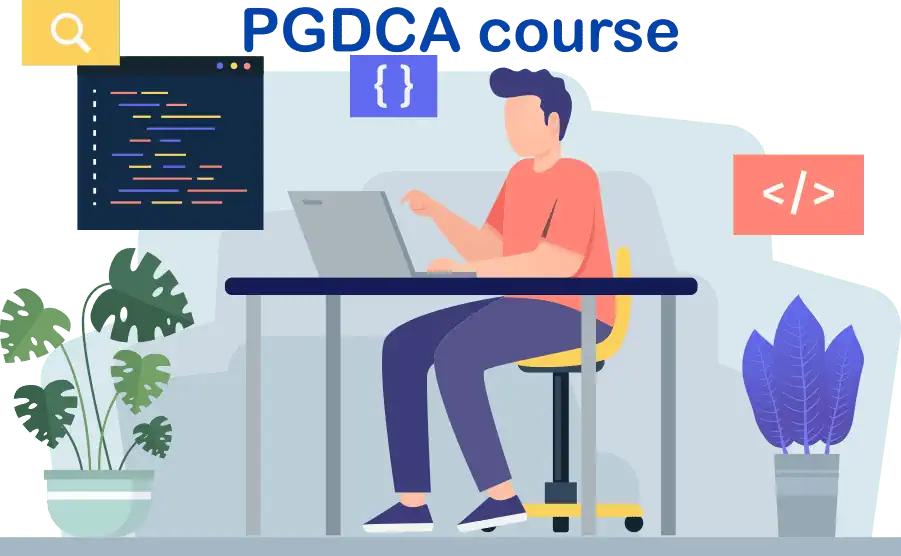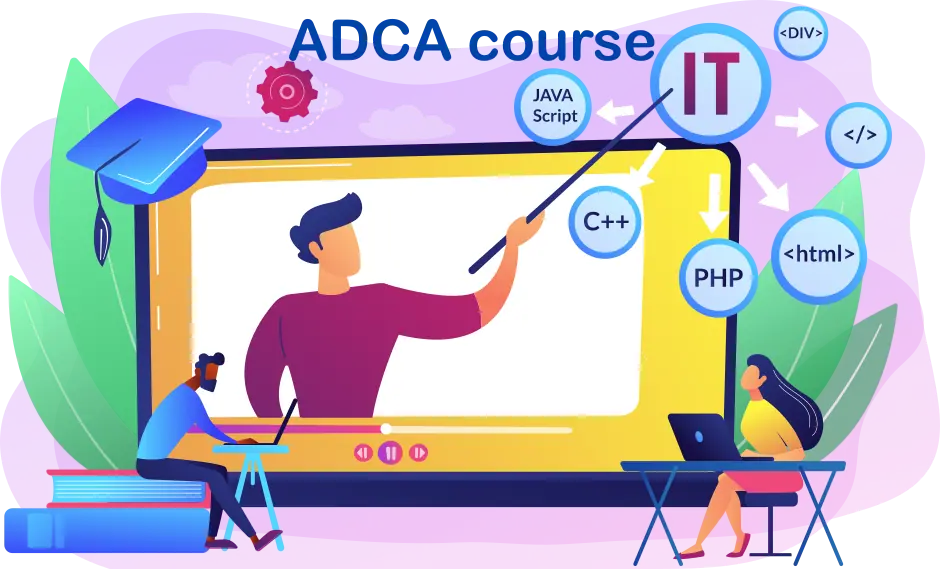Proficiency in creating aesthetically pleasing and expertly structured papers is crucial in an era where digital communication rules. It is possible to learn the skills required to create printed and digital items of superior quality by enrolling in a desktop publishing (DTP) computer course. A desktop publishing (DTP) course provides an in-depth investigation of the publishing industry, covering a broad range of components essential for producing engaging and high-quality content. Fundamentally, desktop publishing (DTP) gives people the skills to work with text, pictures, graphics, and illustrations to create publications that are aesthetically pleasing and easily understood.
This kind of course delves deeply into the nuances of layout design, teaching students how to grasp compositional elements like hierarchy, alignment, and balance. Experts in text formatting, image modification, and colour management, they acquire the ability to handle industry-standard tools like Adobe InDesign or QuarkXPress skillfully. As students learn how to optimize readability and aesthetic appeal through font selection, spacing, and typographic hierarchy, their understanding of typography becomes increasingly important.
DTP operators are employed in roles such as graphic designer, desktop publisher, etc. and many more. More details about the DTP computer course are available on this blog.
About the DTP computer course
Desktop Publishing is referred to as DTP. In short, DTP creates, builds, and edits documents using page layout software on desktop computers or other computer systems. The creation of print publications is the primary focus of DTP. In more recent times, DTP has also been involved in the creation of many types of online content.
DTP operator need to learn computer applications, understand hardware (such as a printer), and buy the necessary page layout software. Think of an example. Have you ever seen a brochure in different languages? It is, indeed, a DTP case that has been created using page layout software.
The duties of the DTP operator include typography, document layout (form), localized translation and document printing. Document production, processing, and printing are major job aspects of DTP. There is also printing of posters, illustrations, graphics, business cards, circulars, announcements, signboards, packaging products, etc.
Duration of a DTP course
The total duration can range from three to twelve months for Certificate and Diploma Programs in Desktop Publishing. The duration of the IISDT DTP certification course is 3 months, but the diploma in DTP is around 1 year. It varies and depends on the institute.
Syllabus of DTP computer course
The following is the DTP course syllabus:
Fundamentals of Computer& Desktop Publishing: Windows Features and Components, Windows Explorer, Hardware & Software (install and troubleshoot), Boolean algebra and logic circuits, E-publishing and network publishing, print on demand E-publishing.
Photoshop: All Tools (Marquee Tool, Magnetic Tool, Slice Tool, Patch Tool, Clone Stamp Tool, Gradient Tool, Smudge Tool, Blur Tool, Text Tool, etc.), Histogram, Color Range, Layer Effects and Styles, Blending Modes, Filters.
Coreldraw 10: Interface and components, Drawing and Selection, Working with Images, Page Layout and Background, Text, layers, colours, gradients, logo making.
PageMaker 7: Interface and Components, Text Formatting and Text Block, Paragraph and Page Formatting, Styles.
Screen Printing: High Volume Rotational Printing Processes, Screen-Printing Component, High-Speed Belt Screen-Printing Press Concept, Ink Flow in the Screen-Printing Process, Rotary Screen-Printing, Screen-Printing Press.
HTML: Web Page Components, HTML Elements, MS Frontpage
Basics of MS Word, Ms. PowerPoint & Ms. Excel: Introduction to MS Office, page formatting, paragraph formatting, text formatting, text editing, etc. MS Excel interface, data manipulation, entering data, editing data, copying data, etc. Powerpoint, presentation, slides note page, handouts, creation of presentation, blank presentation, etc.
Eligibility of DTP computer course
No particular educational background is necessary. At the very least, one must be a 10th pass.
Admission process
Admissions to desktop publishing programs are on a first-come, first-served basis. It is important to check with the institute that offers certification or diplomas in DTP computer courses.
Though it is preferable if students have passed at least their tenth-level examinations from an accredited institution, there are no formal eligibility requirements for the DTP Courses. But, there are a lot of career opportunities for them in the future if they have a higher degree.
Top colleges or institutes and fees
While there are many regional institutes in India that offer DTP course offline, certain institutes have stepped up to fill the knowledge gap by giving courses online. Here are a few of the best institutes offering this DTP computer course.
| Course Name | Name of the Institute | Average Course Fees | Course Duration |
| Diploma in Desktop Publishing | Dotnet Institute | INR 6700 | 6 months |
| Advance Diploma in Desktop Publishing | National Allindia Council For Computer Training Centre | INR 7500 | 12 months |
| Executive Diploma in Graphics Design and Desktop Publishing | International Career Institute | INR 2264 | 2 Months |
| Diploma In Desktop Publishing (DTP) | Indian Student of Skill Development and Training | INR 2500 | 12 months |
| Certificate In Desktop Publishing (DTP) | Indian Student of Skill Development and Training | INR 1500 | 3 Months |
| Certified DTP Operator | Indian Computer Institute | – | 3 months |
Each college or institute has a different course price for the DTP courses. A payment can range between 1500 to 15000 rupees.
Jobs Salaries and scopes of a DTP operator
After completing the DTP course, a variety of options exist in different industries. Following completion of this degree, there are a few disciplines that offer job choices.
Desktop Publishers: Their job is to use publishing software to create a variety of documents, including brochures, business cards, financial reports, novels, newspapers, and newsletters. Photographs, pictures, charts, numerical data, etc., are all combined and formatted in these publications.
Average Salary: INR 1-3 lacs (approx.)
Graphic Designer: These experts are in charge of creating the designs for publications like books, journals, and websites. They do this by utilizing technology like computer applications like Photoshop, Illustrator, and others.
Average Salary: INR 3-4 lacs (approx.)
Newsletter Designer: They work on stories that the editor designates for additional printing and publication, to incorporate them into the newsletters in the most relevant and educational way possible. For the story to be visually appealing enough for viewers, these experts need to be knowledgeable in visuals and specialized fonts.
Average Salary: INR 1-4 lacs (approx.)
Web Designer: Banner and ad designs for individual websites are created by web designers as part of their work. The online ads are engaging and interactive; that is, they take a specific action when the reader clicks on it.
Average Salary: INR 3-6 lacs (approx.)
Font Designer: When a circumstance arises where the correct font cannot be found for a printing application, their task involves either changing a current typeface or creating a new font from scratch. He is given the task of resolving font-related problems.
Average Salary: INR 3-4 lacs (approx.)
Conclusion
A straightforward, foundational course in graphic design is the Diploma in Desktop Publishing (DTP). After completing their 10th or 12th, any stream student can enrol in the DTP computer course to advance their career.
This blog is a comprehensive overview of the Desktop Publishing (DTP) course. Upon successful completion of the course, you can work in the commercial sector as a DTP designer or DTP operator.
Looking at your interest in DTP course we recommend you check other related courses available that you can study such as



